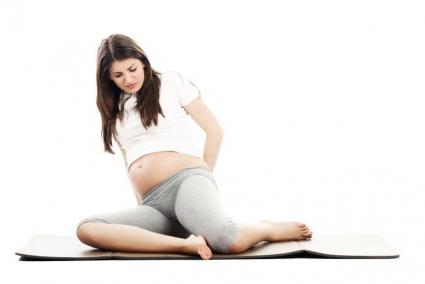By Annette “Dr Z” Zaharoff, M.D.
 Much is made of the pain that women endure to give birth. But often there is constant uncomfortable, sometimes debilitating pain that occurs during and after pregnancy.
Much is made of the pain that women endure to give birth. But often there is constant uncomfortable, sometimes debilitating pain that occurs during and after pregnancy.
It’s called sacroiliac joint pain, or SI joint pain. The SI joints are between the sacrum (tailbone) and ilium (hip bone) in the pelvis. Strong ligaments connect the bones and joint.
During the first trimester, the ovary and placenta start producing a hormone, appropriately called Relaxin, to relax the ligaments and soften and widen the cervix.
What typically happens is that the pressure placed on the pelvic region by the growing or emerging baby irritates the ligaments and joints – either on one or both sides. The ligaments become stretched and the SI joint becomes unstable. This can result in discomfort and pain, both before and after giving birth.
SI joint pain is not just an issue for pregnant women. Golfers and other athletes involved in sports that involve rotating the hips may be impacted by SI joint pain, or anyone who suffers a traumatic fall, such as slipping on the ice and falling on your tail bone.
For expectant or new mothers, however, SI joint pain may be more common, and very incapacitating. Women who try to walk or sit too long may complain that the pain refers down to the legs. As muscles tighten it can impact the sciatica. There also may be pubic pain that cascades along the groin area.
Sometimes physical therapy or cortisone injections are used to help manage the pain. If the SI joint remains unstable, however, the pain will return.
Prolotherapy can be an effective treatment for SI joint pain. As many of you know, I am an ardent proponent of Prolotherapy as a non-surgical means of repairing and regenerating musculoskeletal injuries. I recently helped lead two mission trips to Mexico and Honduras that served to train physicians from around the world on best practices for administering Prolotherapy, and to provide Prolotherapy treatments to thousands of patients.
Prolotherapy involves the injection of a solution of dextrose (the body’s naturally produced sugar) and lidocaine into damaged tissue or joints to help promote healing. Osteoarthritis and other forms of arthritis can be treated with Prolotherapy, along with joint and tendon damage resulting from sports or work-related injuries.
I’ve been using Prolotherapy for over a decade to treat neck and low back pain, degenerative disc disease, knee and hip arthritis, tennis elbow, carpal tunnel syndrome, ankle and foot injuries, shoulder pain and other acute and chronic sprains and strains.
It also can be effective in treating SI joint pain. When ligaments are loosened due to Relaxin and childbirth, they become like a stretched-out rubber band that doesn’t snap back into place. Prolotherapy can help regenerate new, stronger and more stable ligament tissue.
Positive, pain-relieving results may occur within three to six injection treatments. It’s an attractive treatment for expectant mothers for many reasons. Prolotherapy is already a safe procedure, but it’s even more comforting to mothers in that respect because we do not have to inject any harsh drugs into the mother’s system to help relieve pain. Instead of using lidocaine, which is a local anesthetic, sterile water may be used as a substitute, making Prolotherapy a totally drug-free treatment option.
If you are experiencing SI joint pain, consult with your physician and ask whether Prolotherapy might be right for you.
Dr. Annette “Dr. Z” Zaharoff heads the Non-Surgical Center of Texas, focusing on non-surgical treatments to relieve pain and repair injuries. A former professional tennis player who competed on the WTA circuit, Dr. Zaharoff has been utilizing regenerative injection treatments including Stem Cell Therapy, PRP Injection Therapy and Prolotherapy for more than a decade. Learn more about her at www.drzmd.com. You can follow her on Facebook at www.Facebook.com/DrZaharoff.
